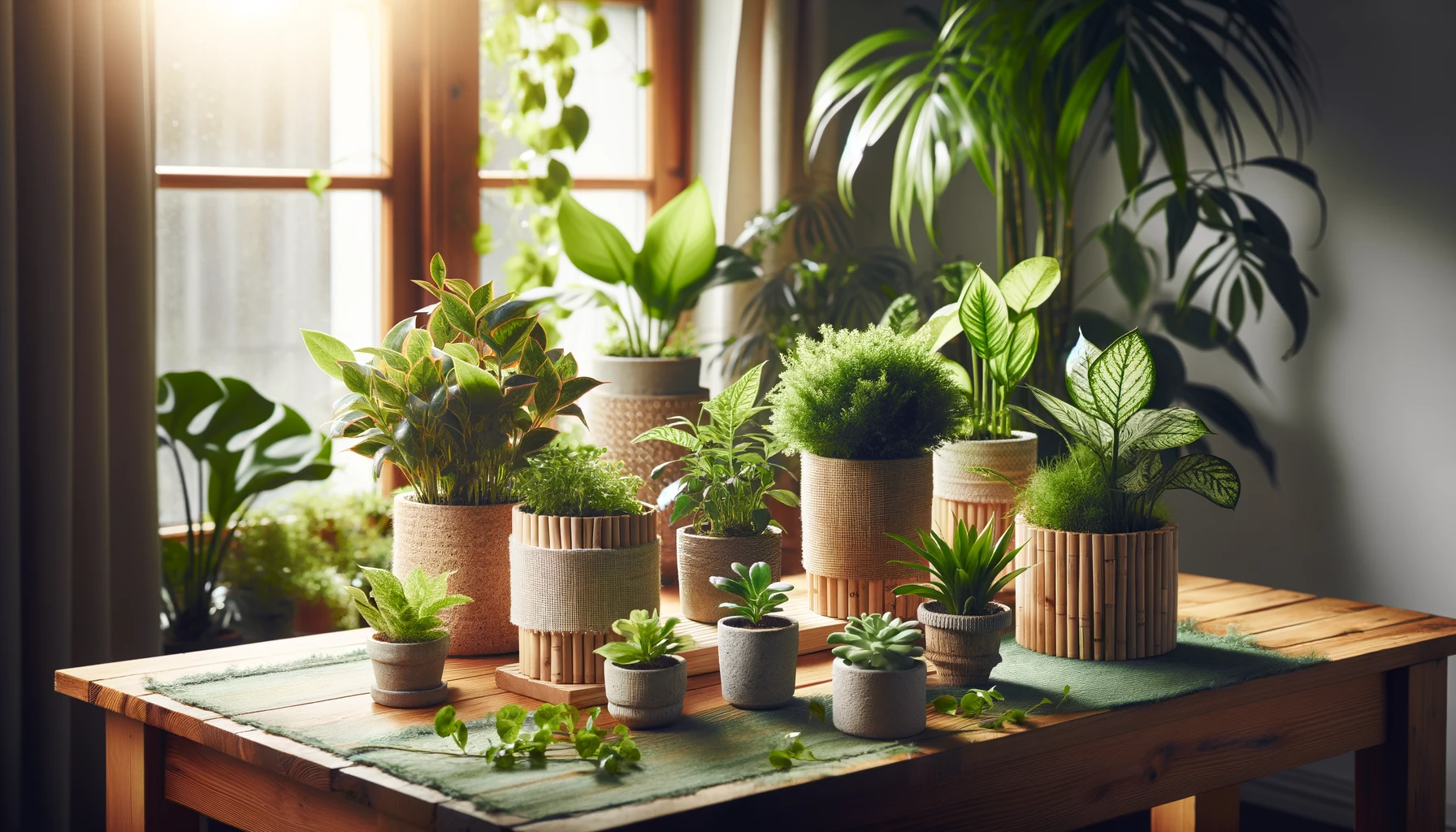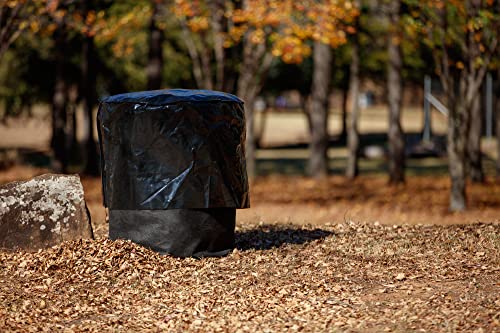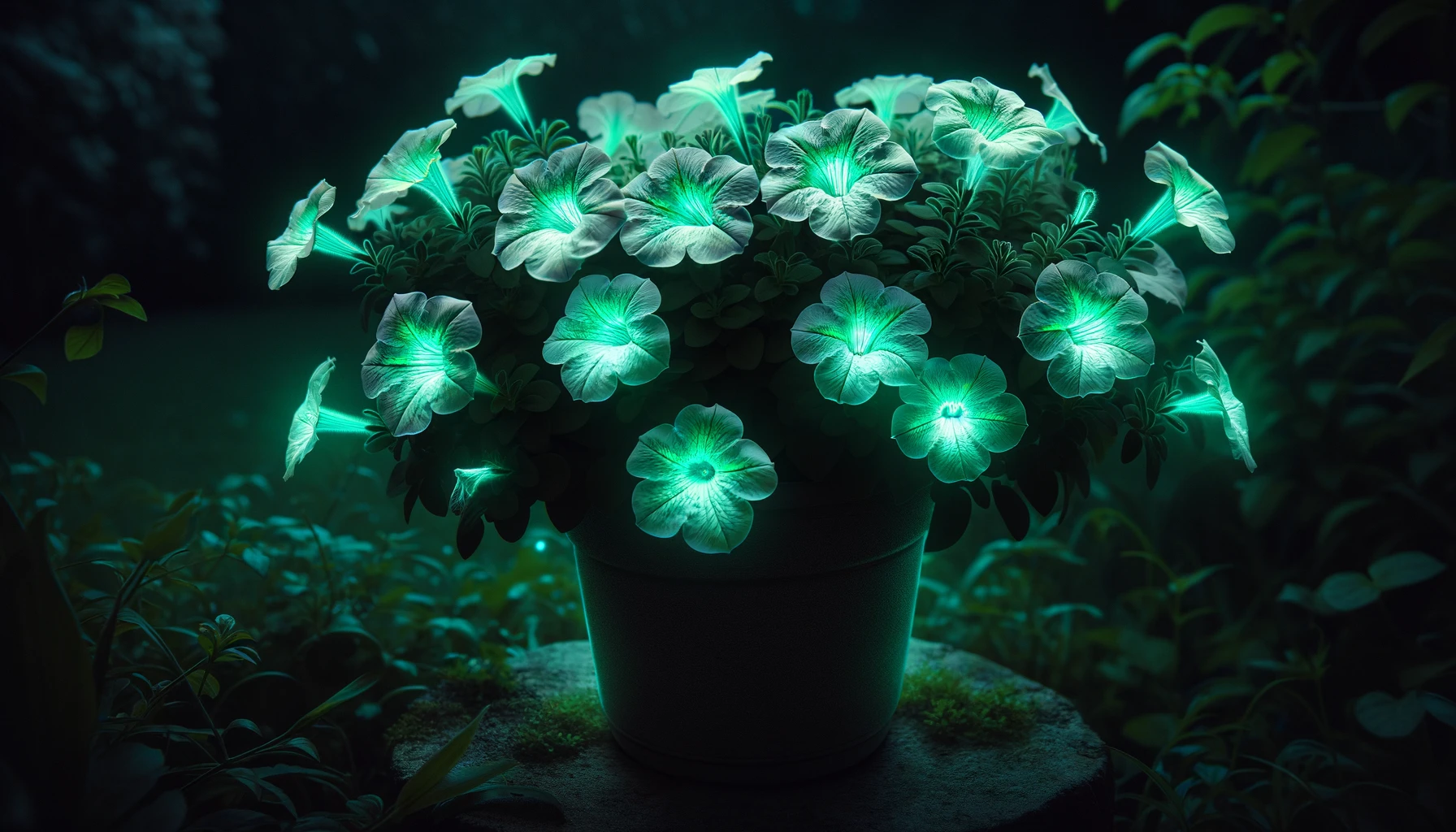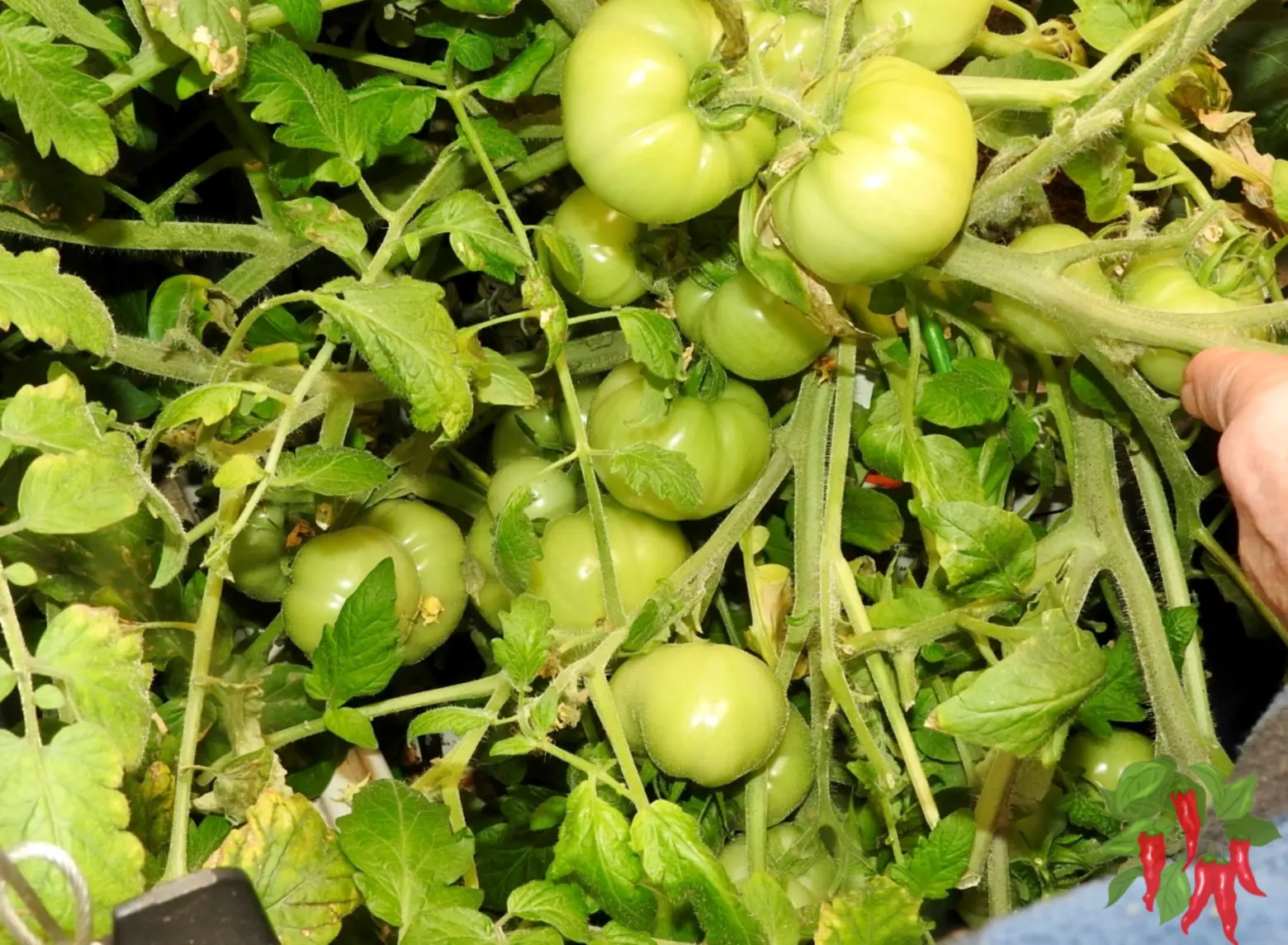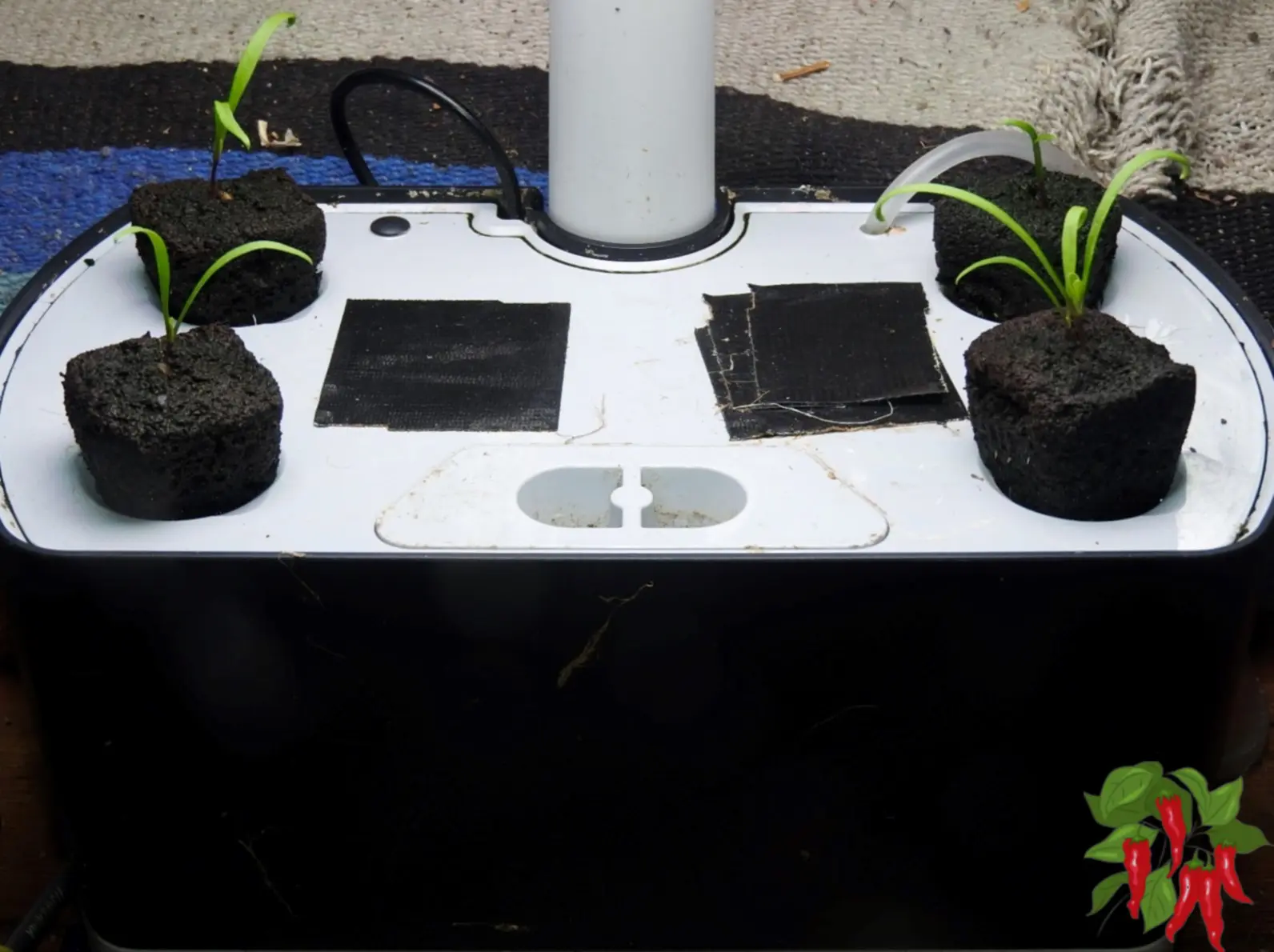This post contains affiliate links. If you buy something from one of our links we may earn a commission. Thanks

Learn how to create an eco-friendly indoor garden. Discover sustainable plant choices, natural light tips, and eco-friendly practices for a green oasis.
How To Create an Eco-Friendly Garden
Key Takeaways:
- Create an Eco-Friendly Indoor Garden by choosing low-maintenance, air-purifying plants, using sustainable pots, and maximizing natural light.
- Opt for organic soil and fertilizers, and implement water-saving techniques.
- This approach promotes a healthier home and planet while adding beauty to your space.
Are you looking to bring nature indoors in a sustainable way? In this guide, we’ll show you how to create an eco-friendly indoor garden that not only adds beauty to your home but also benefits the environment.
From choosing the right plants to using natural light, we’ll cover all the essentials to help you cultivate a green sanctuary indoors.
How to Create an Eco-Friendly Indoor Garden
Creating an eco-friendly indoor garden is a wonderful way to bring a piece of nature into your home while being mindful of the environment.
These gardens not only enhance the beauty of your living space but also offer numerous benefits for sustainability.
By opting for eco-friendly practices, you can improve air quality, promote well-being, and contribute to the conservation of our planet’s resources.
Let’s explore how you can embark on this green journey and create a thriving indoor garden that aligns with eco-friendly principles.
Benefits of Eco-Friendly Indoor Gardening
- Improved Air Quality: Indoor plants can purify the air by absorbing toxins and producing oxygen, leading to a healthier indoor environment.
- Enhanced Well-being: Being surrounded by greenery has been shown to reduce stress, boost mood, and improve overall mental health.
- Sustainability: Eco-friendly gardening practices help reduce your carbon footprint and promote biodiversity, contributing to a more sustainable future.
In the following sections, we’ll guide you through the steps to establish your own eco-friendly indoor garden, from selecting the right plants to adopting sustainable gardening practices.
Understanding Eco-Friendly Gardening

Eco-friendly gardening is about creating a green space that is harmonious with nature and sustainable for the environment.
It involves practices and materials that conserve resources, minimize waste, and reduce the overall environmental impact.
By focusing on sustainability, an eco-friendly garden not only thrives but also contributes positively to the well-being of our planet.
Sustainability in Gardening
- Resource Conservation: Utilizing rainwater harvesting, using organic mulches, and choosing drought-resistant plants to conserve water.
- Minimizing Environmental Impact: Opting for natural pest control methods and avoiding synthetic fertilizers and pesticides to protect soil and water quality.
Importance of Eco-Friendly Practices and Materials
- Health of the Home: Non-toxic gardening practices ensure a safer environment for both the inhabitants of the home and the surrounding ecosystem.
- Health of the Planet: Sustainable gardening practices help reduce carbon footprint, promote biodiversity, and support the overall health of the planet.
By adopting eco-friendly gardening practices and materials, you can create a garden that is not only beautiful but also environmentally responsible.
In the next sections, we’ll explore specific steps and tips to help you establish your eco-friendly indoor garden.
Planning Your Eco-Friendly Indoor Garden
Before diving into creating your eco-friendly indoor garden, it’s essential to consider a few key factors to ensure a successful and sustainable setup.
Planning is crucial to align your garden with eco-friendly principles while accommodating your space and lifestyle.
Initial Considerations
- Space: Assess the available space in your home for your indoor garden. Consider using shelves, hanging planters, or vertical gardens to maximize space efficiently.
- Light: Determine the natural light availability in your space. South-facing windows provide the most light, but if natural light is limited, consider energy-efficient grow lights.
- Plant Selection: Choose plants that are suited to your indoor environment and require minimal resources. Opt for native plants, air-purifying species, and low-water varieties.
Tips for Creating a Sustainable Garden Plan
- Start Small: Begin with a few easy-to-care-for plants to ensure success and gradually expand your garden as you gain confidence.
- Eco-Friendly Materials: Use pots made from recycled materials or biodegradable planters. Consider repurposing household items as plant containers.
- Water Conservation: Implement water-saving practices such as using self-watering pots or collecting rainwater for watering your plants.
- Organic Soil: Opt for an organic potting mix free from synthetic chemicals, which is better for both your plants and the environment.
- Companion Planting: Group plants with similar light and water needs together to create a microclimate that can reduce resource usage.
By taking the time to plan your eco-friendly indoor garden thoughtfully, you can create a sustainable and beautiful green space that enhances your home and benefits the environment.
Selecting Eco-Friendly Plants
Choosing the right plants is a crucial step in creating an eco-friendly indoor garden.
Opt for plants that thrive in indoor conditions and require minimal resources, such as water and fertilizer.
This not only ensures the health and longevity of your plants but also reduces their environmental impact.
Air-Purifying Plants for Indoor Gardens
- Snake Plant (Sansevieria trifasciata): Known for its ability to filter indoor air, the snake plant is a low-maintenance option that can thrive in low light and requires infrequent watering.
- Pothos (Epipremnum aureum): This fast-growing vine is effective at removing indoor pollutants and is easy to care for, tolerating low light and occasional neglect.
- Spider Plant (Chlorophytum comosum): With its ability to remove toxins from the air and produce oxygen, the spider plant is a great addition to any indoor garden. It’s also easy to propagate and care for.
The NASA Clean Air Study was a project led by the National Aeronautics and Space Administration (NASA) in association with the Associated Landscape Contractors of America (ALCA) in 1989, to research ways to clean the air in sealed environments such as space stations. Its results suggested that, in addition to absorbing carbon dioxide and releasing oxygen through photosynthesis, certain common indoor plants may also provide a natural way of removing volatile organic pollutants (benzene, formaldehyde, and trichloroethylene were tested). Wikipedia
When selecting plants, consider their light and water requirements, as well as their growth habits, to ensure they are compatible with your indoor environment and eco-friendly gardening goals.
For more information on air-purifying plants and their benefits, check out resources like NASA’s Clean Air Study.
Table: Easy To Grow Houseplants, Herbs, and Vegetables
Here’s a table with some easy-to-grow houseplants, herbs, and vegetables that are suitable for indoor gardening:
| Category | Plant/Herb/Vegetable | Light Requirements | Watering Needs | Notes |
|---|---|---|---|---|
| Houseplants | Snake Plant | Low to bright indirect | Low (let the soil dry out) | Very tolerant of neglect, great air purifier |
| Pothos | Low to bright indirect | Moderate (keep soil moist) | Fast-growing vine, easy to propagate | |
| Spider Plant | Bright, indirect | Moderate (keep the soil moist) | Produces baby plants (spiderettes) that can be repotted | |
| Herbs | Basil | Bright, direct | Moderate (keep the soil moist) | Pinch off flower buds to encourage bushier growth |
| Mint | Bright, indirect | Moderate (keep the soil moist) | Can be invasive, best grown in a container to control growth | |
| Chives | Bright, indirect | Moderate (keep the soil moist) | Easy to grow, can be harvested continuously | |
| Vegetables | Lettuce | Bright, indirect | High (keep the soil consistently moist) | Harvest outer leaves and the plant will continue to produce |
| Cherry Tomatoes | Bright, direct | Moderate (keep the soil moist) | Requires support as the plant grows, needs regular fertilization | |
| Radishes | Bright, direct | Moderate (keep the soil moist) | Quick-growing can be harvested in as little as three weeks |
Choosing Sustainable Containers
Selecting the right containers is crucial to creating an eco-friendly indoor garden.
Opting for sustainable materials not only reduces your environmental impact but also contributes to the overall health and growth of your plants.
Importance of Eco-Friendly Pots and Planters
- Environmental Impact: Choosing biodegradable pots, recycled containers, or repurposed items helps reduce waste and promotes a circular economy.
- Plant Health: Sustainable materials like terracotta or breathable fabric pots can provide better air circulation and moisture management for your plants.
Tips for Choosing the Right Containers
- Size Matters: Ensure the pot is appropriately sized for your plant’s root system. A pot that’s too small can restrict growth, while one that’s too large can lead to overwatering issues.
- Material Considerations: Consider the material’s impact on the plant’s needs. For example, terracotta is porous and allows soil to dry out more quickly, which is great for succulents but may not be ideal for moisture-loving plants.
- Drainage is Key: Regardless of the material, make sure your container has adequate drainage holes to prevent waterlogging and root rot.
- Repurpose with Purpose: Get creative by repurposing items like old mugs, cans, or even boots as planters. Just ensure they have proper drainage and are safe for plant growth.
By choosing sustainable containers for your indoor garden, you not only support the environment but also create a unique and personal space that reflects your commitment to eco-friendly living.
Utilizing Natural Light and Energy-Efficient Lighting
Maximizing natural light is a key aspect of eco-friendly indoor gardening.
It not only provides the necessary energy for photosynthesis but also reduces the need for artificial lighting, saving energy and resources.
Maximizing Natural Light
- Window Placement: Position your plants near windows that receive ample sunlight throughout the day. South-facing windows are ideal for most plants, but east or west-facing windows can also provide sufficient light.
- Reflective Surfaces: Use mirrors or other reflective surfaces to bounce light around the room, ensuring that your plants receive light from all angles.
Using Energy-Efficient Lighting
- LED Grow Lights: If natural light is limited, opt for energy-efficient LED grow lights. They consume less energy and produce less heat than traditional grow lights, making them ideal for indoor gardens.
- Timers and Sensors: Use timers or light sensors to automatically turn lights on and off as needed, ensuring that your plants receive the right amount of light without wasting energy.
By utilizing natural light and energy-efficient lighting options, you can create an eco-friendly indoor garden that thrives while minimizing its environmental impact.
Eco-Friendly Soil and Fertilizers
Creating an eco-friendly indoor garden starts with choosing the right soil and fertilizers.
Organic potting mixes are better for the environment as they avoid synthetic fertilizers and toxic chemicals, ensuring your plants grow in a healthy and sustainable environment.
A good organic potting mix can include ingredients such as bat guano, humus, mulch, alfalfa meal, kelp meal, beneficial bacteria, coconut coir, and earthworm castings.
Coco Coir the Sustainable Alternative
Coconut coir is a sustainable alternative to peat-based potting soil mixes. It’s a by-product of the coconut industry, it is lighter, lasts longer, and is more environmentally friendly.
When choosing your potting soil, look for mixes that are light and fluffy to ensure proper aeration for your plants.
Good organic potting soil should also have well-balanced water retention to keep your plants hydrated without causing mold or rotting issues.
Fertilizers
For fertilizers, consider using natural options like compost, worm castings, or organic fertilizers that release nutrients slowly, promoting strong root development and healthy plant growth.
These natural fertilizers provide essential nutrients like nitrogen, phosphorus, and potassium, which are crucial for the growth and health of your plants.
By selecting eco-friendly soil and fertilizers, you’re not only nurturing your indoor garden but also contributing to a healthier planet.
Water Conservation Techniques
Conserving water is crucial in maintaining an eco-friendly indoor garden. Here are some tips and tools to help you achieve efficient water usage:
Using Self-Watering Systems
- Self-Watering Pots: These pots have a reservoir beneath the soil, allowing plants to draw water as needed. They’re great for busy gardeners and help prevent over and underwatering.
- Watering Stakes and Probes: These devices release water slowly into the soil. Watering stakes use a detachable plastic bottle while watering probes are made from water-permeable ceramic and connect to an external water source. They’re ideal for providing consistent moisture.
- Self-Watering Planter Inserts: These inserts create a water reservoir at the bottom of your pots, making them self-watering. They’re a good option if you have specific pots you want to use for your garden.
Efficient Watering Techniques
- Water Deeply but Less Frequently: This encourages deep root growth and reduces water waste.
- Use a Watering Can with a Long Spout: This helps target the water directly to the soil, minimizing evaporation.
- Water in the Morning: This reduces water loss due to evaporation and helps prevent fungal diseases.
Collecting Rainwater
- Set up a rainwater collection system to use natural, unchlorinated water for your plants. This can be as simple as placing a barrel under a downspout.
By implementing these water conservation techniques, you can create a more sustainable indoor garden that uses water efficiently while keeping your plants healthy and thriving.
Pest Management and Plant Care
Creating an eco-friendly indoor garden involves not only choosing the right plants and materials but also managing pests in a way that doesn’t harm the environment.
Here are some tips for eco-friendly pest management and plant care:
- Natural Pest Control Methods: Instead of using chemical pesticides, opt for natural pest control methods. For example, a mild soap and water mix can be effective against mealybugs (Get Busy Gardening). Diatomaceous earth is another natural option that can help control various pests, including slugs and beetles (Gardener’s Path). Neem oil can also be used to treat egg clusters and juvenile squash bugs (Mother Earth News).
- Preventive Measures: Taking preventive measures can help reduce the need for pest control. Ensure proper sunlight and spacing for your plants to keep them healthy and less susceptible to pests (Gardening Channel). Attracting beneficial insects like ladybugs, lacewings, and parasitic wasps can help control pest populations naturally (Gardening Channel).
- Regular Plant Care: Regularly inspect your plants for signs of pests and diseases. Remove any affected parts promptly to prevent the spread. Keep your garden clean and free of debris where pests can hide.
By following these eco-friendly pest management and plant care practices, you can create a healthy and sustainable indoor garden that benefits both you and the environment.
Incorporating Eco-Friendly Design Elements
Enhancing your indoor garden with eco-friendly design elements not only adds aesthetic appeal but also contributes to sustainability.
Here are some ways to incorporate eco-friendly design into your indoor garden:
- Reclaimed Wood for Plant Stands: Utilize reclaimed wood to create unique plant stands. This not only adds a rustic charm to your space but also reduces waste by repurposing old materials.
- Sustainable Materials for Decoration: Decorate your indoor garden with items made from sustainable materials. Consider using bamboo, cork, or recycled glass to add a touch of eco-friendly elegance to your garden.
- Natural Insulation and Energy Efficiency: Incorporate natural insulation materials like wool or hemp into your indoor garden space. These materials can help regulate temperature, making your garden more energy-efficient.
- Water Conservation: Consider adding a small wildlife pond to your indoor garden. This not only adds a beautiful water element but also helps conserve water and support local wildlife.
- Native Plants: Incorporate native plants into your indoor garden. They are usually more resistant to pests and diseases and require less water and maintenance.
- Natural Lighting: Maximize the use of natural light by placing your indoor garden near windows or using skylights. This reduces the need for artificial lighting and saves energy.
By integrating these eco-friendly design elements into your indoor garden, you can create a beautiful, sustainable space that benefits both you and the environment.
How to Create an Eco-Friendly Indoor Garden FAQS
Here are some frequently asked questions about creating an eco-friendly indoor garden:
Q: How can I make an eco-friendly indoor garden?
A: Start by finding the best location for your garden, choosing eco-friendly plants, using sustainable containers, and selecting organic soil and fertilizers. Regular watering and care are essential for maintaining a healthy garden.
Q: What are some eco-friendly plants for indoor gardening?
A: Some popular eco-friendly indoor plants include snake plants, pothos, spider plants, and herbs like rosemary and lavender.
These plants require minimal resources and are known for their air-purifying qualities.
Q: How can I conserve water in my indoor garden?
A: Use self-watering systems, water your plants efficiently, and consider collecting rainwater for irrigation.
Self-watering planters are great for busy gardeners and help prevent over or underwatering.
Q: What are some natural pest control methods for indoor gardens?
A: Use insecticidal soap spray, neem oil, or peppermint oil to control pests. These natural remedies are non-toxic and biodegradable, making them safe for pets and the environment.
Q: How can I fertilize my indoor garden in an eco-friendly way?
A: You can use various natural fertilizers to nourish your indoor garden in an eco-friendly manner. Some options include:
- Compost: Rich in nutrients, compost can be made from kitchen scraps and garden waste.
- Worm Castings: These are a great source of nutrients and improve soil structure.
- Fish Emulsion: A liquid fertilizer high in nitrogen, it’s great for leafy plants.
- Seaweed Extract: Rich in minerals and trace elements, it promotes healthy growth.
- Coffee Grounds: Add nitrogen to the soil, ideal for acid-loving plants.
Each of these natural fertilizers provides essential nutrients to your plants without the use of synthetic chemicals.
How to Create an Eco-Friendly Indoor Garden Conclusion
Summary of Key Points
Creating an eco-friendly indoor garden is a rewarding way to bring nature into your home while being mindful of the environment.
By selecting low-maintenance, air-purifying plants, using sustainable pots, and maximizing natural light, you can create a green oasis that improves air quality and promotes well-being.
Benefits of Eco-Friendly Gardening
An eco-friendly indoor garden not only enhances the beauty of your living space but also contributes to a more sustainable and healthier planet.
It reduces your carbon footprint, conserves resources, and provides a habitat for beneficial insects.
Encouragement to Start Your Garden
We encourage you to embark on your eco-friendly gardening journey.
Whether you have a small space or a large room, you can make a positive impact on the environment.
Start with a few plants and gradually expand your green oasis.
Read and learn more: Eco-Friendly Gardening
Read more: Eco-Friendly Pots and Planters
Further Reading and Resources:
- Indoor Plants: Care and Management – A compilation of resources on houseplants from cooperative extensions across the nation. Read more
- Caring for Houseplants – Information on watering, lighting, temperature, and more from the University of Missouri Extension. Read more
- Common Houseplant Insects & Related Pests – A guide from Clemson University Extension on preventing and controlling common pests for indoor plants. Read more
- Houseplant Problems – Purdue University Cooperative Extension provides solutions to common issues with indoor plants. Read more
- Fertilizing Houseplants – A guide from the University of Connecticut Cooperative Extension on fertilizing houseplants. Read more
- Vegetable Varieties for Maine Gardens – A resource from the University of Maine Cooperative Extension on selecting vegetable varieties suitable for Maine gardens. Read more
- Choosing, Storing, and Using Fresh Produce – Recipes and tips for choosing, storing, and using fresh produce from the University of Maine Cooperative Extension. Read more
These resources can provide valuable information and guidance for anyone interested in eco-friendly indoor gardening and container gardening.








